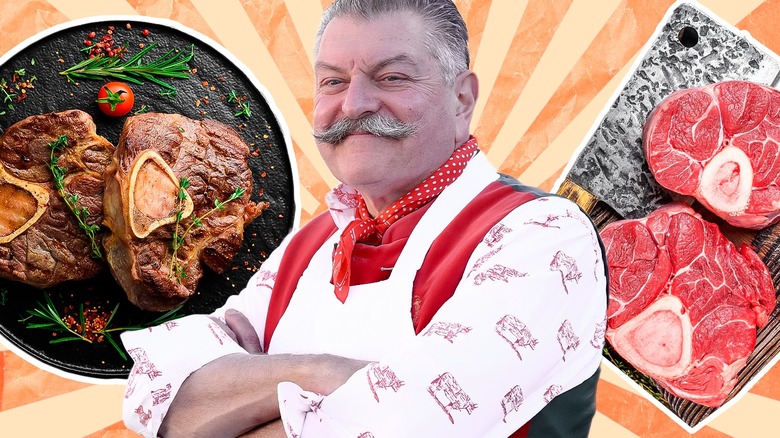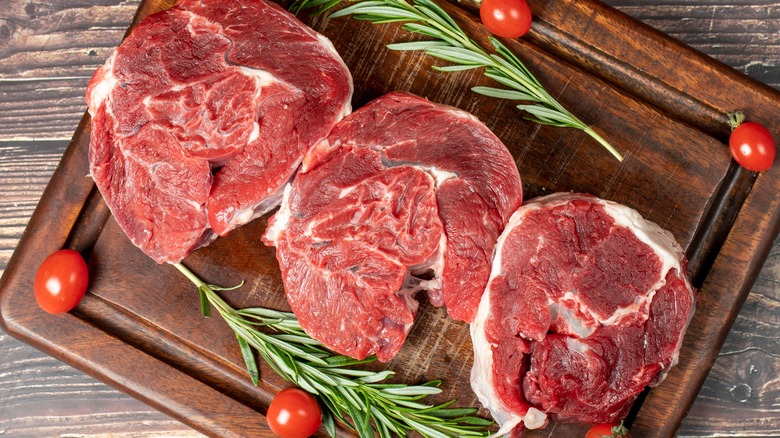Famed Butcher Dario Cecchini's Secret For Preparing Beef Shank - Exclusive
Beef shank is a cut of meat with very strong associations. It's commonly used in soups, stews, and dishes like beef bourguignon. It's braised until tender in Chinese jiang niu rou. Maybe most iconic of all, beef shank is synonymous with osso bucco and is sometimes sold by that name alone. Because of its composition — tendons, connective tissue, intramuscular fat, a large bone — beef shank isn't something you can sear; it's almost exclusively cooked and served with long, low, slow methods. And due to those intensive techniques that build deep and savory flavors, beef shank isn't the cut you would pick if you're craving a fresh, light meal.
Fortunately, Italian butcher Dario Cecchini isn't one for common advice. He's bucked convention many times over his career, having led a tail-to-nose cooking movement for decades. Cecchini has plenty of secrets for preparing beef shank, including a suggestion for how to make this decadent cut feel more refreshing. In an exclusive interview with Tasting Table, Cecchini told us that his key to cooking beef shank starts, as many recipes do, by braising the beef with mirepoix. However, what you do after makes the difference.
After removing the meat from the braise, Cecchini said that his trick is to "turn it into a warm beef salad, which is once again the onions, carrot, and celery, raw this time." He serves these crudites julienned and paired with "a little bit of good olive oil, salt, pepper, and a few drops of white wine vinegar."
Dario Cecchini's salad uses all the beef shank
The shank is a tough cut of beef, with many pieces of cartilage and connective tissue that need to break down before it's tender enough to eat. In fact, some chefs recommend removing large parts of the connective tissue prior to cooking as a way to make the meat more presentable on the plate while reducing the risk that the shank comes out unfinished. There are even some who suggest removing the bone prior to cooking. However, Dario Cecchini says this piece of the process is unnecessary, and part of his secret for preparing beef shank is to serve the salad alongside "what you find of the tendons, the cartilage, all of that good stuff."
If that sounds like you're headed towards a chewy, tough mess, fear not. The connective tissue within the beef shank is edible and will actually soften with enough cooking time. This typically takes four to six hours, but a beef shank can need up to eight to 10 hours before the collagen, fat, and other tissues render or break down into gelatin. Once they have cooked down into a soft texture, the tissue becomes a nutritious pocket of flavor and lends a welcome and umami-packed addition with crisp vegetables, unctuous oil, and the tang of white wine vinegar.

